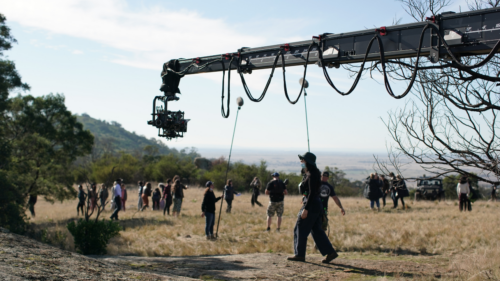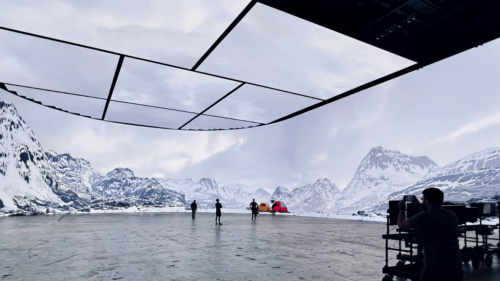/News 25.01.17
STRIKING WESTERN AUSTRALIAN LOCATIONS CREATE CINEMATIC BACKDROPS FOR 2017 RELEASES
The Western Australian landscape has provided natural filmic production design on a substantial number of productions in the past two years.
These include Red Dog: True Blue (2016), the prequel to Red Dog (2011), a film which became an instant Australian classic and winner of numerous awards including an AACTA for Best Film. Both films were filmed in the State’s Pilbara region, which boasts some of the Earth’s most ancient rock formations and home to Australia’s famed rich red dirt. The story of this legendary kelpie and the Western Australian landscapes will captivate audiences at the Sundance Film Festival in January 2017 when Red Dog: True Blue screens as part of the kids’ program.
Simon Baker’s directorial debut Breath, in which he also stars, and co-produced by Mark Johnson (Breaking Bad, The Notebook, Rain Man) capitalises on the crystal blue water and rugged white sand beaches of Western Australia’s Great Southern region.
Jasper Jones starring Hugo Weaving and Toni Collette, filmed in the neighbouring South West region, is set amongst the enchanted forests of some of the world’s tallest and most ancient trees. Both regions, just a short flight or few hours drive from Perth, are full of memorable small towns, thriving local wineries, gourmet goods and forestry industries. The highly anticipated Breath and Jasper Jones will both be released in 2017.
The newly launched Western Australian Regional Film Fund invites international and Australian film and television production companies to access the AUD$16 million fund. This Fund aims to attract the best projects to film on locations throughout regional Western Australia.
Ben Elton’s Three Summers, also due for release in 2017, was the first production to receive this funding, with 100% of filming taking place in Western Australia’s Peel region. The Fund has received a high level of interest since its launch in July 2016 and expects to announce a number of significant new investments in the coming weeks.
A Few Less Men, the anticipated sequel to worldwide hit comedy, A Few Best Men (2011) brings back the hilarious and absurd friendship of David, Tom and Graham who are stranded in the middle of the vast Australian bush transporting a gold penis shaped coffin.
The road movie was filmed across Western Australia. Producers Laurence Malkin and Share Stallings were already familiar with producing in Western Australia and looked to continue the producing collaboration with Western Australia’s Tania Chambers utilising the state’s unique locations and talented and expert local crew.
With dynamic cinematic values at the forefront of the storytelling, Director Mark Lamprell sought to engage the audience with the visual feast that is the Australian bush.
“Outstanding locations such as the Pinnacles – a strange and magical forest of petrified tree trunks in the desert – presented brilliant opportunities for Cinematographer Steve Arnold and the talented local crew to help me unfold the action of our story in unique and often astonishing places, offering depth and freshness to the cinematic experience,” said Lamprell.
“Shooting in the desert is a visual gift. Using the iconic, vast white sands dunes of Lancelin for the moment when the boys think they are hopelessly lost, we were able to reprise and parody the same sense of hopelessness conveyed in Lawrence of Arabia“.
Watch more of the A Few Less Men team talk about their experience filming in Western Australia below.
Western Australia is not just an extraordinary location for screen production; it also has very attractive incentives, resources, facilities and a film-friendly attitude that can ensure a project comes to life seamlessly.
Western Australia makes up one-third of the Australian continent. It spans over 2.5 million square kilometres (965,000 square miles) bordered largely by desert to the East, and on the West by 12,500 (7,813 miles) of pristine coastline. Known as Australia’s sunniest state, Western Australia experiences long periods of clear, blue skies and clarity of light providing favourable filming conditions all year round.
For comprehensive information on filming in the Western Australia and the Western Australian Regional Film Fund please visit www.filminwesternaustralia.com.au










